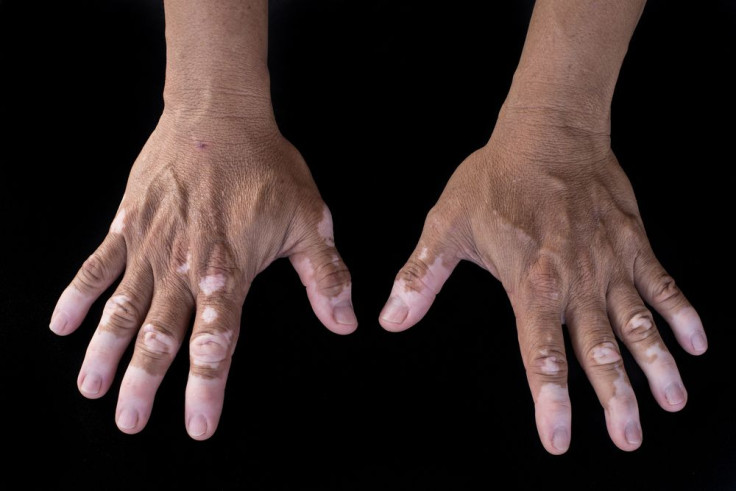Arthritis Drug May Double As Vitiligo Treatment: Why Some Drugs Can Treat Multiple Conditions

Vitiligo is a condition that causes individuals to lose skin pigment in blotches. A recent study, however, has revealed that a common medication for rheumatoid arthritis is successful in restoring skin color to a person suffering from vitiligo. But this is not the first time a common medication has proven useful in treating another seemingly unrelated health condition, and the reason for this lies not in the drug but rather the fundamental way in which it affects the body.
Although vitiligo is neither painful nor life-threatening, it can often cause serious distress to those it afflicts. Unfortunately, there is currently no cure for vitiligo and treatment options meant to control the condition often don’t work. In a recent study, researchers from Yale University investigated how an existing class of FDA-approved drugs known as Janus kinase inhibitors are a possible treatment for the skin condition. According to the press release, JAK inhibitors are approved for treating rheumatoid arthritis but have also demonstrated effectiveness in treating hair loss caused by alopecia areata. Based on these results, the team’s lead researchers, Drs. Brett King and Brittany Craiglow, believed the drug might have similar effects on patients with vitiligo.
For their study, the researchers administered the drug to a 53-year-old female patient with prominent vitiligo for over a year. Results became obvious a mere two months into the study as the patient began to noticeably regain pigment on her face, arms, and hands. Within five months, nearly all the white spots caused by vitiligo were gone. The team believes these results are promising in the use of JAK inhibitors as an effective treatment for vitiligo.

"While it's one case, we anticipated the successful treatment of this patient based on our current understanding of the disease and how the drug works," King said. "It's a first, and it could revolutionize treatment of an awful disease. This may be a huge step forward in the treatment of patients with this condition."
This phenomenon of a medication effectively treating a completely non-related condition is actually an extremely common occurrence in medicine. Just this year alone we’ve seen antidepressants treat Ebola, Viagra prevent the transmission of malaria, and perhaps the most famous dual use drug is erectile dysfunction medicines, which were originally created as a way to lower blood pressure.
Although some may view drugs as magical pills that directly relieve our ailments, in reality their behavior is much more abstract. By simple definition, drugs are chemicals that change the way a person’s body works. For some drugs, it’s this change that enables them to relieve symptoms of multiple diseases. For example, the JAK inhibitors work by binding to and thus inhibiting Janus kinase enzymes. This inhibition causes the body to change how it behaves and reduce its immune response. This reaction is important for those living with autoimmune conditions, where the immune system overreacts and destroys not only foreign bodies but also its own healthy cells.
While so far the arthritis drug's effects on vitiligo have only been observed in one patient, the team plans on continuing their investigation and conducting more clinical trials to prove whether or not they can recreate the results.
Source: Craiglow BG, King BA. Tofacitinib Citrate for the Treatment of Vitiligo A Pathogenesis-Directed Therapy. JAMA Dermatology. 2015.



























